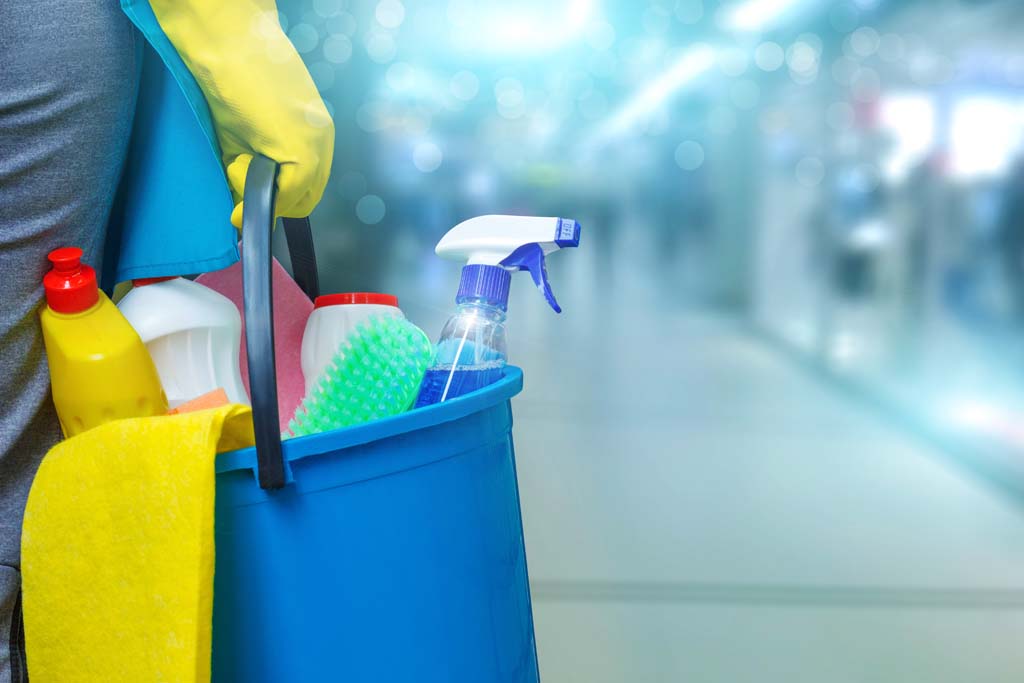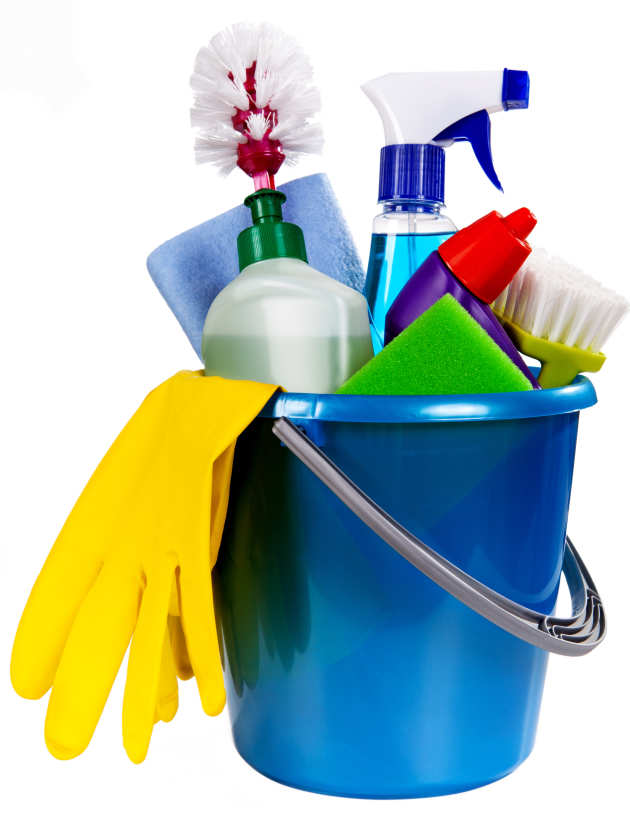Step-by-Step Everyday Cleaning Guide: The Best Way to Scrub the Surfaces, Vacuum Carpets, and Clear Out Any Clutter Successfully
Step-by-Step Everyday Cleaning Guide: The Best Way to Scrub the Surfaces, Vacuum Carpets, and Clear Out Any Clutter Successfully
Blog Article
Recognizing the Need for Completely Disinfecting and Sterilizing Often Touched Surface Areas in High-Traffic Locations
In the realm of public health and wellness and security, the careful sanitation and sanitization of regularly touched surfaces in high-traffic areas stand as vital measures in stopping the spread of damaging microorganisms. By exploring the different aspects of surface disinfection, from the dangers connected with ignoring cleansing protocols to the efficient methods that can be employed, a clearer understanding emerges of the crucial function these methods play in protecting public health.
Importance of Surface Sanitation
Emphasizing the extensive disinfection of high-traffic surface areas is important in maintaining a hygienic environment and stopping the spread of dangerous microorganisms. High-touch surfaces such as door takes care of, light buttons, elevator switches, and countertops offer as breeding grounds for infections and microorganisms. Routine sanitation of these surfaces is vital to decrease the threat of contamination and transmission of illnesses.
By applying a robust disinfection procedure, services and institutions can develop a more secure environment for workers, customers, and visitors. Proper surface area sanitation not only minimizes the spread of contagious diseases yet additionally infuses self-confidence in the sanitation and safety and security of the premises. This aggressive approach demonstrates a dedication to wellness and wellness, which is especially important in high-traffic locations where the possibility of exposure to virus is increased.
Moreover, surface area disinfection plays a crucial role in total infection control techniques. Integrated with hand hygiene methods, wearing masks, and preserving physical distancing, comprehensive sanitation of high-touch surface areas forms an extensive defense against the transmission of dangerous microbes. Prioritizing surface area sanitation is a crucial component of an alternative technique to health and wellness and security in common areas.
Threats of Ignoring Cleansing Practices
Overlooking complete disinfection of high-traffic surface areas considerably enhances the threat of microbial and viral contamination, presenting a serious threat to the health and wellness of people frequenting these areas. Failure to implement correct cleaning techniques can bring about the build-up and spread of unsafe pathogens, including germs and viruses, on frequently touched surfaces such as doorknobs, handrails, elevator switches, and kitchen counters.

In addition, overlooking the importance of thorough cleansing not just endangers the well-being of individuals but additionally undermines initiatives to preserve a sanitary and tidy atmosphere. It is essential to recognize the importance of correct sanitation procedures in stopping the spread of infections and safeguarding public health and wellness.
Reliable Disinfection Approaches
To keep optimal cleanliness and minimize the danger of contamination on high-traffic surface areas, employing reliable sanitation techniques is necessary. One of the most efficient and common disinfection methods is utilizing chemical disinfectants.
An additional reliable approach is making use of UV-C light. UV-C light has been shown to be reliable in killing a wide variety of microorganisms by disrupting their DNA structure, therefore stopping them from replicating. Nonetheless, it is crucial to use UV-C light properly, guaranteeing that the correct intensity and exposure time are applied to achieve the wanted sanitation results.
Furthermore, employing vapor cleansing as a disinfection approach can be very effective, specifically on surface areas that are heat-resistant. Vapor can pass through porous surfaces and eliminate germs, infections, and various other virus properly. When utilizing heavy steam cleansing, it is essential to make certain that the surface area gets to the required temperature for an enough quantity of time to assure proper sanitation.
Effect On Public Health
The maintenance of high standards of cleanliness and disinfection on high-traffic surfaces plays a critical duty in safeguarding public wellness. Often touched surfaces in areas with high footfall, such as doorknobs, hand rails, elevator buttons, and bathroom centers, serve as breeding premises for unsafe virus.
In high-traffic areas like flight terminals, colleges, medical facilities, and public transport systems, the influence of rigorous sanitation measures can not be understated. Prioritizing the sanitization of frequently touched surface areas is a proactive approach to promoting public health and wellness and enhancing the safety and security of people in shared spaces.
Applying Regular Cleaning Up Methods
Quickly setting up and adhering to a consistent timetable of cleansing methods is extremely important for maintaining the cleanliness and safety and security of his response high-traffic surface areas. Normal cleaning procedures are vital in avoiding the buildup of bacteria and pathogens on regularly touched surfaces, especially in locations with high foot traffic. By applying a systematic approach to cleaning, companies can successfully reduce the risk of illness transmission and produce a healthier environment for employees, customers, and the general public.
To develop an efficient cleansing timetable, it is vital to identify high-traffic locations that call for frequent attention. These locations might include doorknobs, hand rails, lift switches, washroom centers, and shared equipment. Executing a regular cleansing program that targets these surfaces numerous times a day can significantly minimize the spread of dangerous bacteria and viruses.
Moreover, making use of appropriate cleansing representatives and disinfectants is crucial to guaranteeing that surface areas are thoroughly disinfected. Normal training of cleansing staff on correct cleansing techniques and the importance of adherence to the cleansing schedule is also vital in preserving a sanitary read review atmosphere. By focusing on consistent cleansing methods, companies can promote the wellness and wellness of people that interact with these high-traffic surfaces.

Final Thought
To conclude, it is vital to focus on extensive sanitation and sanitization of frequently touched surfaces in high-traffic areas to prevent the spread of unsafe pathogens and keep public wellness. Neglecting proper cleansing methods can enhance the danger of contamination and transmission of illness. By implementing regular cleaning procedures and making use of reliable disinfection approaches, we can create a much safer atmosphere for everybody (Clear Out Any Clutter). It is vital to recognize the significance of preserving tidy surface areas in high-traffic areas to make sure the well-being of the neighborhood.
In the realm of public health and wellness and security, the meticulous sanitation and sanitization of often touched surface areas in high-traffic areas stand as paramount measures in stopping the spread of unsafe virus. By exploring the different facets of surface area sanitation, from the dangers linked with neglecting cleaning methods to the efficient methods that can be used, a more clear understanding emerges of the essential duty these methods play in safeguarding public wellness.Additionally, utilizing heavy steam cleaning as a disinfection technique can be highly effective, particularly on surfaces that are heat-resistant. When making use of steam cleansing, it is important to guarantee that the surface area reaches the required temperature for a sufficient quantity of time to ensure visit this site proper disinfection.
In conclusion, it is essential to focus on extensive sanitation and sanitization of often touched surfaces in high-traffic locations to protect against the spread of dangerous virus and keep public health.
Report this page